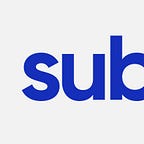The new year comes with many changes and different trends in web as well as in mobiles. Websites are beginning to have as many videos and hero (big) images as possible in the intro, while their mobile versions are quicker and quicker. Just like in the previous years, the focus in on the easiness of using the interface, flat graphics and organic animations which bring life to any digital product.
Taking into consideration the rapid evolution of mobile devices, it is expected that in 2016 the mobile traffic be equal to that on the desktop, meaning more responsive sites and applications based on verticality and on the well-known scroll of the social applications. Moreover, the fact that last year Google decided that the responsive sites be positioned higher in research than those that are only for desktop is another reason why more and more companies are trying to make responsive versions or even custom applications.
Interfaces based on cards are among the biggest elements launched by Material Design and can be found in applications, websites and even prints. They are easy to create, they can adapt to any resolution, keep the information organized and are very readable.
Animations have been one of the biggest trends of 2015, whether they were full screen or small elements that one could hardly notice. In 2016, their popularity will surely grow, even though chances are that their size will decrease. They are an entertaining way of keeping the user focused or even surprise him while the content is uploading.
Beautiful and readable fonts are easier to find with the emergence of the Type kit from Adobe and that of Google Fonts, and sites are beginning to have cleaner and cleaner fonts, conveying the information in a very easy manner.
Illustrations and drawings are an entertaining way of highlighting the elements of the site or those of the application. They have grown in popularity through the introduction of icons, with the purpose of making the user understand easier and quicker what the respective steps are or what benefits that service brings. Furthermore, they can create a personal connection with the users, which can bring many advantages.
The more powerful and lighter colors, resembling those used during the 1980s, are among the elements that have the most chances of being used this year. We can see them everywhere, from Dribble to Google Material Design.
The websites containing a slider were used at the beginning in a frame, and now they are used in full screen. Each slide is controlled by a button or has a timer which can dictate the period of display. Users can thus navigate much more easily through information, having an almost physical experience.
Analyzing the examples mentioned above, we notice that there won’t be a single trend this year, but rather a multitude of possible trends for web and applications, which designers will be able to use according to each project. But we should not see these trends as more than mere tools or orientations in the creation of a product. They shouldn’t be used excessively only because they are hip, but we should look beyond them and use only those that are suitable to the project.
To make sure you don’t miss any news or interviews subscribe to the Subsign newsletter here: http://eepurl.com/bZIFJr
For a review or product update in terms of design feel free to leave a comment below or contact us any time at office@subsign.co.
